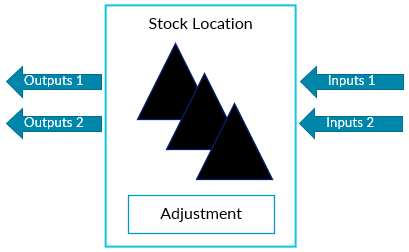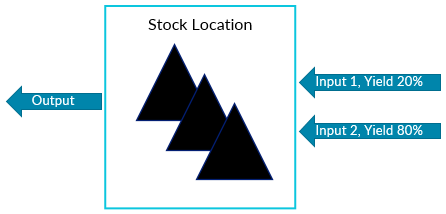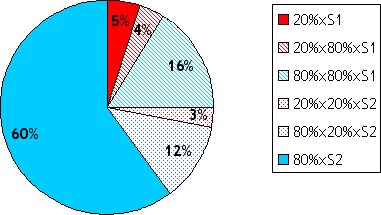Multiple Input and Output Process Flows
Note: Only input process flows are current managed. The inclusion of output process flows (forward-push) is not currently implemented.

Whatever method is used to calculate the reconciliation value, how to spread the reconciliation value amongst outputs or inputs needs to be determined. This separation is important because it affects the next reconciliation location that uses process flows Outputs 1 and Outputs 2 or Inputs 1 and Inputs 2.
Allocating Different Confidence Levels to Process Flows
If a process flow is better known than another process flow and if this process flow is supposed to be more accurate, each process flow can be considered to have a different accuracy. Reconciliation calculations must include this discrepancy.
For example, consider a back push reconciliation where the process flow Input 1 can be measured with a better accuracy than the process flow Input 2. If it has been evaluated that adjustments to recorded values should be spread with the ratios 20% for Input 1 and 80% for Input 2, then these percentages mean that if recorded Input 1 transactions and recorded Input 2 transactions are similar, the global adjustment should be 20% for Input 1 reconciliation and 80% for Input 2 reconciliation.

If recorded values of inputs are included in calculations (Input 1 and input 2), the following ratios result:
Adjustment Reconciliation 1 = Adjustment Reconciliation * 20% * (Input 1 + 80% of Input 1 + 20% of Input 2) / (Input 1 + Input 2)
Adjustment Reconciliation 2 = Adjustment Reconciliation * 80% * (Input 2 + 20% of Input 2 + 80% of Input 1) / (Input 1 + Input 2)
Example: Input 1 = 250 t, Input 2 = 750 t. Red areas contribute to Input 1, and blue areas to Input 2.


